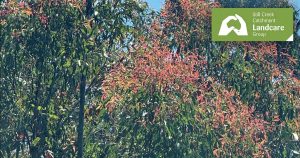 [vc_row][vc_column width=”1/6″ offset=”vc_col-lg-1/5 vc_col-md-1/5 vc_col-xs-1/5″][us_image image=”81787″ size=”thumbnail” align=”left” style=”circle” has_ratio=”1″][/vc_column][vc_column width=”1/12″ offset=”vc_col-lg-4/5 vc_col-md-4/5 vc_col-xs-4/5″][vc_column_text]By Lachlan Turner[/vc_column_text][us_post_date][/vc_column][/vc_row][vc_row][vc_column][vc_column_text]Throughout open woodland and scrubby forest can be found the Purple Twining Pea (Hardenbergia violacea) twisting and twining its way over and through understorey plants of up to 2 metres in height. Where conditions are ideal, masses of purple flowers can be seen, in season, all over the supporting plant. The observant bushwalker could be forgiven in thinking that this plant is a shrub or bush in its own right.
[vc_row][vc_column width=”1/6″ offset=”vc_col-lg-1/5 vc_col-md-1/5 vc_col-xs-1/5″][us_image image=”81787″ size=”thumbnail” align=”left” style=”circle” has_ratio=”1″][/vc_column][vc_column width=”1/12″ offset=”vc_col-lg-4/5 vc_col-md-4/5 vc_col-xs-4/5″][vc_column_text]By Lachlan Turner[/vc_column_text][us_post_date][/vc_column][/vc_row][vc_row][vc_column][vc_column_text]Throughout open woodland and scrubby forest can be found the Purple Twining Pea (Hardenbergia violacea) twisting and twining its way over and through understorey plants of up to 2 metres in height. Where conditions are ideal, masses of purple flowers can be seen, in season, all over the supporting plant. The observant bushwalker could be forgiven in thinking that this plant is a shrub or bush in its own right.
Not so, as it is in effect a vine that twists and turns in a somewhat haphazard fashion around the branches of the host plant. In situations where this plant is growing and it has not been able to find a supporting bush, it will spread in a prostrate habit across the ground, even twisting upon itself, forming a brilliant spring display ground cover.
The leaves are generally shaped in the form of an elongated arrow head.
Where the tendrils of the vine-like branchlets have reached the limit of their host support the plant continues to grow, resulting in a graceful drooping display of flower laden growth. Its main flowering period is from late July to early October.
Due to the attractive colours of its pea shaped flowers, horticulturists have developed many cultivars with several colour variations, that are suitable for the home garden. When grown in a home garden this plant prefers a position of full sun in a frost free location as well as a well drained soil that mimics its natural bushland habitat. It responds well to pruning to keep it compact.
This plant has also been given a variety of descriptive names, the most appropriate, possibly is, “Happy Wanderer” which typically describes its growth habit. It is also known as “False Sarsparilla” and “Purple Coral Pea”.[/vc_column_text][/vc_column][/vc_row]







